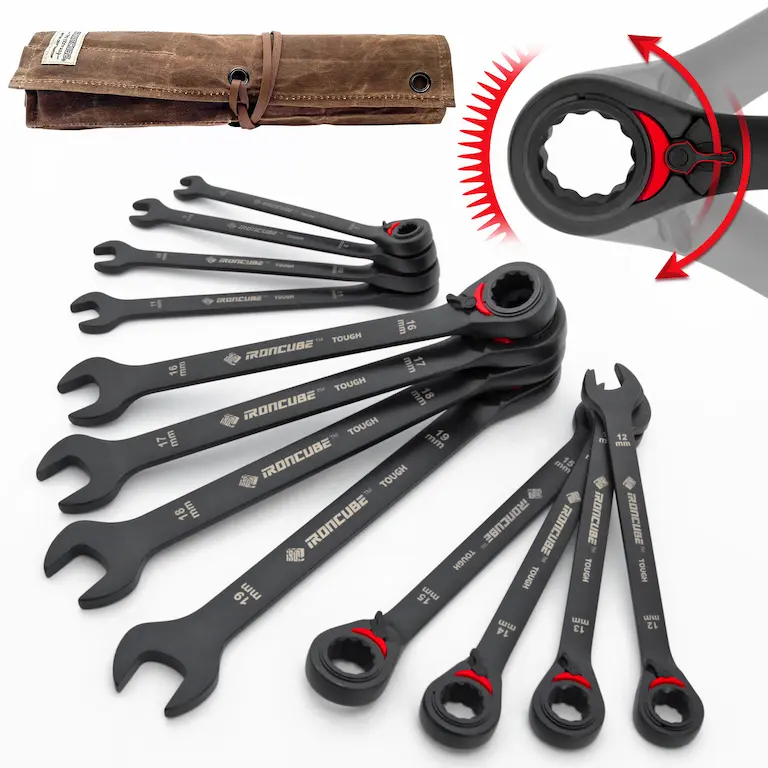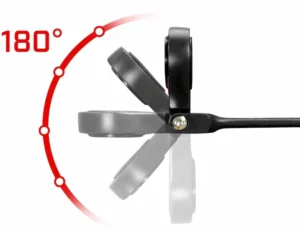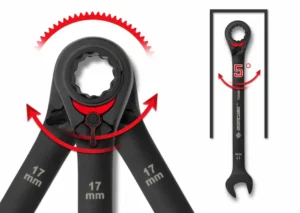Imagine cutting your bolt-turning time by 70% while reducing hand fatigue to nearly zero. That’s the power of mastering ratchet wrench use—a skill that transforms tedious, repetitive tasks into smooth, efficient operations. Whether you’re tackling your first automotive repair or advancing your mechanical skills, understanding proper ratchet wrench technique isn’t just helpful—it’s revolutionary.
Every experienced mechanic knows this secret: the difference between struggling with standard wrenches and effortlessly completing complex projects lies in one crucial tool. This comprehensive guide will take you from complete beginner to confident user, covering everything from basic operation to professional-level techniques that separate amateur attempts from expert execution.
Check here to get the 16 pcs Ratchet wrench set
What is a Ratchet Wrench and How Does it Work
A ratchet wrench combines the turning power of a traditional wrench with an ingenious mechanical advantage: the ability to tighten or loosen fasteners without repositioning your grip. The ratchet mechanism allows the tool to rotate freely in one direction while engaging positively in the other, creating a one-way clutch system that revolutionizes how we approach repetitive turning tasks.
Learn more about what is a ratcheting wrench
The magic happens inside the ratchet head, where a series of precisely machined teeth interact with a spring-loaded pawl. When you turn the handle in the working direction, the pawl engages with the teeth, transferring your force directly to the fastener. Reverse the motion, and the pawl slides over the teeth with a distinctive clicking sound, allowing you to reposition without losing contact with the bolt or nut.
Understanding ratchet wrench function means recognizing three critical components working in harmony. The handle provides leverage and control, typically featuring an ergonomic grip that reduces hand fatigue during extended use. The head houses the ratchet mechanism and connects to various socket sizes, making it adaptable to countless fastener types. The directional switch—usually a small lever or button—allows you to change between tightening and loosening operations instantly.
This mechanical brilliance means continuous motion in tight spaces where traditional wrenches would require constant repositioning. A skilled user can operate a ratchet wrench in spaces as small as 15 degrees of arc, making it indispensable for automotive work, appliance repair, and countless professional applications.
Essential Preparation Before Using a Ratchet Wrench
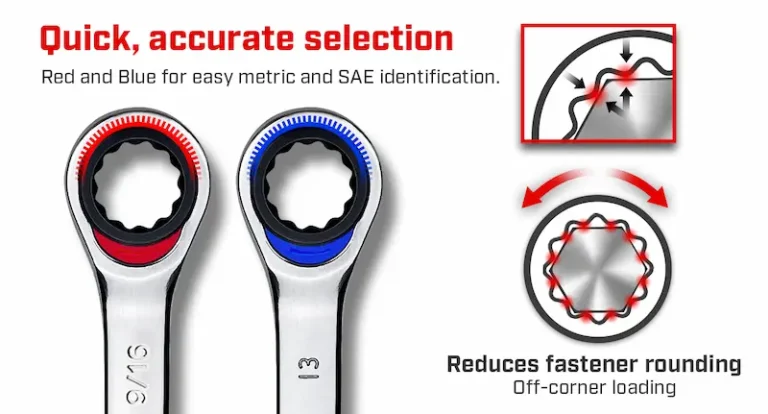
Success with any ratchet wrench begins long before you touch the first bolt. Proper preparation prevents frustration, protects your tools, and ensures safe, efficient operation that would make any professional mechanic proud.
Start by inspecting your ratchet mechanism thoroughly. Test the directional switch to ensure it moves smoothly between positions—a sticky or loose switch indicates potential internal problems that could fail under load. Check that the pawl engages properly by listening for crisp, even clicking sounds as you operate the handle. Inconsistent clicking or excessive play suggests worn components that need attention.
Socket selection demands precision that many beginners overlook. The socket must fit the fastener perfectly—too loose and you’ll round off corners, too tight and you’ll struggle with removal. Quality sockets should slide onto the ratchet drive with minimal effort but lock securely in place. Always verify the socket is fully seated before applying torque.
Your workspace preparation directly impacts success rates. Ensure adequate lighting that eliminates shadows around your work area. Position yourself so you can apply force comfortably without straining your back or overextending your arms. Clear away obstacles that might interfere with your ratchet handle’s swing path—even experienced mechanics occasionally forget this fundamental step.
Safety equipment isn’t optional for serious ratchet wrench use. Safety glasses protect against debris when breaking loose corroded fasteners. Work gloves provide better grip and protect your hands from sharp edges, though avoid bulky gloves that reduce your feel for proper torque application.
Common Applications: Where to Use a Ratchet Wrench
Understanding when and where to employ a ratchet wrench transforms your approach to mechanical tasks. These versatile tools excel in specific situations that would challenge or defeat traditional wrenches entirely.

Automotive Repairs and Maintenance The automotive industry practically invented modern ratchet wrench applications. Engine work demands accessing bolts in cramped spaces where traditional wrenches can’t function effectively. Transmission repairs, suspension work, and brake system maintenance all benefit from the ratchet’s ability to operate in restricted areas. Professional mechanics often use ratchet wrenches for 80% of their fastening tasks, switching to other tools only when specific torque requirements or space constraints demand alternatives.
Household Furniture and Appliances Home improvement projects frequently involve fasteners located in awkward positions. Assembling furniture, installing appliances, or repairing household items often requires working in tight corners or overhead positions where continuous ratcheting action prevents arm fatigue. The wrench used with a ratchet mechanism makes these tasks manageable for DIY enthusiasts who might otherwise struggle with repetitive motions.
Industrial and Professional Applications Manufacturing environments demand tools that increase productivity while maintaining precision. Assembly lines utilize ratchet wrenches for consistent, repeatable fastening operations. Maintenance professionals rely on these tools for equipment service in confined spaces like electrical panels, HVAC systems, and industrial machinery where access is limited but reliability is crucial.
Electronics and Precision Work Modern electronics often require miniature fasteners in dense arrangements. Small ratchet wrenches allow technicians to work efficiently in these challenging environments, providing the control needed for delicate components while maintaining the speed advantages of ratcheting action.
Pro Tips for Efficient Ratchet Wrench Use
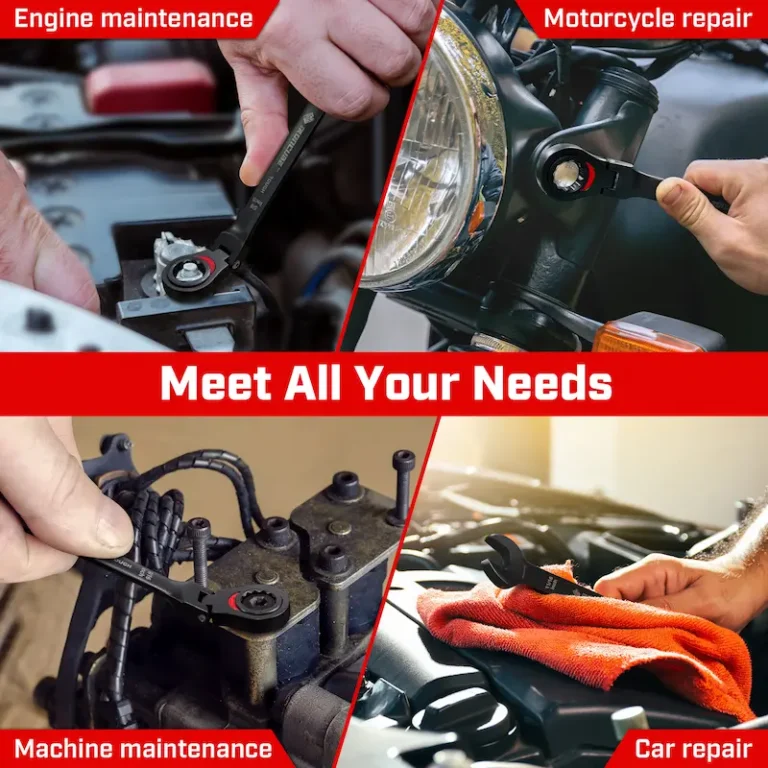
Professional mechanics develop techniques over years of experience that dramatically improve efficiency and prevent common problems. These insider tips can accelerate your learning curve significantly.
Angle Control and Workspace Management The minimum swing angle for most ratchet wrenches ranges from 5 to 15 degrees, but optimal efficiency occurs with 30-45 degree motions. Work to position yourself where you can achieve these larger arcs consistently. When space is truly limited, use shorter, more frequent motions while maintaining steady rhythm.
Force Application Strategies Avoid the common mistake of applying maximum force immediately. Start with moderate pressure and increase gradually until you achieve the desired result. Excessive force can damage fasteners, strip threads, or even break ratchet mechanisms. Professional mechanics often say “feel the resistance” rather than “force the result.”
Direction Switching Techniques Learn to switch directions efficiently without removing the socket from the fastener. This skill prevents lost positioning and reduces overall task time. Practice switching while maintaining socket engagement—a technique that separates experienced users from beginners.
Maintenance During Use Keep your ratchet mechanism clean during work sessions. Metal shavings, dirt, or debris can interfere with proper pawl engagement, leading to skipping or binding. A quick blast of compressed air or a wipe with a clean cloth prevents most field problems.
Recognition of Tool Limits Every ratchet wrench has torque limits beyond which damage occurs. Learn to recognize when you’re approaching these limits—usually indicated by changes in the clicking sound or handle feel. Switch to a appropriate torque wrench for final tightening operations that require specific torque values.
Best Ratchets for Different Applications
Selecting the right ratchet wrench depends on your specific needs, usage frequency, and budget considerations. Understanding the options helps you make informed decisions that provide years of reliable service.
Professional Grade Options Best ratchets for mechanics typically feature fine-tooth mechanisms (80+ teeth) that provide small working angles and smooth operation. These tools justify their higher cost through superior durability, precision, and ergonomic design. Brands like Snap-On, Mac Tools, and Matco dominate professional markets with tools designed for daily use under demanding conditions.
Quality Mid-Range Choices For serious DIY enthusiasts and occasional professional use, mid-range ratchets offer excellent value. Tools from Craftsman, Tekton, and GearWrench provide professional-level performance at fraction of premium prices. These typically feature 72-tooth mechanisms that balance fine control with durability.
Discover the best multi-bit screwdriver
Budget-Friendly Alternatives Entry-level ratchets from Harbor Freight, Husky, or Kobalt serve well for light-duty applications and learning situations. While lacking the refinement of professional tools, they provide adequate performance for household tasks and allow beginners to develop skills without major investment.
Specialty Applications Some situations require specialized ratchet designs. Low-profile ratchets access extremely tight spaces, while heavy-duty models handle high-torque applications. Electric and pneumatic ratchets provide additional power for production environments or particularly stubborn fasteners.
Maintenance Tips to Keep Your Ratchet Wrench Working
Proper maintenance extends tool life dramatically while ensuring consistent performance when you need it most. Professional mechanics often use the same ratchet wrenches for decades with appropriate care.
Regular Cleaning Procedures Clean your ratchet mechanism after each use session, especially in dirty or greasy environments. Use degreasing solvents to remove accumulated contaminants, followed by light machine oil to protect internal components. Pay special attention to the pawl and teeth interface where most wear occurs.
Lubrication Requirements Apply light machine oil to moving parts monthly or after extensive use. Avoid heavy greases that can attract dirt and interfere with smooth operation. A few drops of quality oil on the pawl mechanism and drive square maintains smooth clicking action and prevents premature wear.
Storage Considerations Store ratchet wrenches in dry environments to prevent corrosion. Tool chests with drawer liners protect against impacts that can damage precision mechanisms. Avoid storing under heavy objects that might bend handles or damage ratchet heads.
Periodic Inspection and Adjustment Check your ratchet wrenches regularly for signs of wear, damage, or malfunction. Worn pawls, damaged teeth, or loose components require professional repair or replacement. Most quality tool manufacturers offer repair services that can restore tools to like-new condition.
Troubleshooting Common Problems
Even quality ratchet wrenches occasionally develop problems that affect performance. Understanding common issues and their solutions keeps your tools working efficiently.
Pawl Skipping or Slipping
Pawl Skipping or Slipping This common problem usually indicates worn pawl teeth or accumulated debris in the mechanism. Clean the ratchet head thoroughly and inspect for visible wear. If cleaning doesn’t resolve the issue, professional repair or replacement may be necessary.
Sticky or Difficult Direction Changes
Direction switches that resist movement often suffer from contamination or corrosion. Clean the switch mechanism and apply light lubricant. If problems persist, internal components may require professional attention.
Inconsistent Clicking Sounds
Variations in clicking sounds typically indicate uneven wear or debris interference. Thorough cleaning usually resolves these issues, though significant variations may suggest the need for professional evaluation.
Socket Retention Problems
Sockets that don’t stay securely on the drive square indicate worn retention mechanisms. Check for debris in the socket retention system and clean as needed. Worn components require replacement to ensure reliable operation.
Conclusion
Mastering ratchet wrench use transforms mechanical tasks from frustrating struggles into efficient, satisfying accomplishments. The techniques and principles covered in this guide provide the foundation for years of successful tool use, whether you’re tackling simple household repairs or complex professional projects.
Remember that skill development requires practice and patience. Start with simple applications to build confidence, then gradually tackle more challenging projects as your expertise grows. Quality tools, proper technique, and consistent maintenance practices ensure your ratchet wrenches will serve you reliably for decades.
